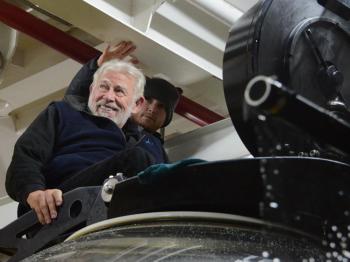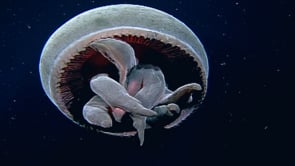
Finding new life forms is exciting. It's fun. It's part of the payoff of doing this kind of research. -- Bruce Robison
Most of the marine animals we're familiar with live in the upper 650 feet of the ocean's surface. Between 650 and 6500 feet lies the mesopelagic zone, one of the least-known environments on Earth. Here, the waters are dark, the water pressure extreme, and many of the animals utterly bizarre. A human in SCUBA gear cannot survive at these depths, but specially designed robots called remotely operated vehicles (ROVs) can.
Biologist Bruce Robison of the Monterey Bay Aquarium Research Institute uses an ROV to travel to the mesopelagic realm in search of new species. In this dark inner space, he finds, studies and photographs all manner of cnidarians. With state-of-the-art underwater cameras, he follows and records these animals, revealing species and behaviors never before witnessed by human eyes.
About Bruce Robison’s Career
Bruce Robison is Research Division Chair at the Monterey Bay Aquarium Research Institute (MBARI) in Moss Landing, California. He completed a Ph.D. at Stanford University in 1973. He then spent two years conducting post-doctoral research on deep sea fishes at the Woods Hole Oceanographic Institution, before accepting a position at the University of California, Santa Barbara. In 1987 he joined the newly formed MBARI.
Robison's research interests are centered on the biology and ecology of deep sea animals, particularly those that inhabit the oceanic water column. He has pioneered the use of undersea vehicles for these studies and he led the first team of scientists trained as submersible pilots for research in midwater. As pilot or observer, Robison has spent a good portion of his career in deep water, aboard more than a dozen different submersibles.
Dr. Robison's midwater research program is presently addressing the ecology of gelatinous animals in the deep sea. This group includes ctenophores, medusae, and siphonophores, animals which cannot be investigated accurately with conventional sampling methods, but which play dominant roles in mesopelagic ecology. Related studies include trophic structure, physiology, and the behavior of midwater animals including fishes and squids. Behavioral studies are also investigating the ways that animals use bioluminescence in the deep sea, with both laboratory and in-situ observations.



















